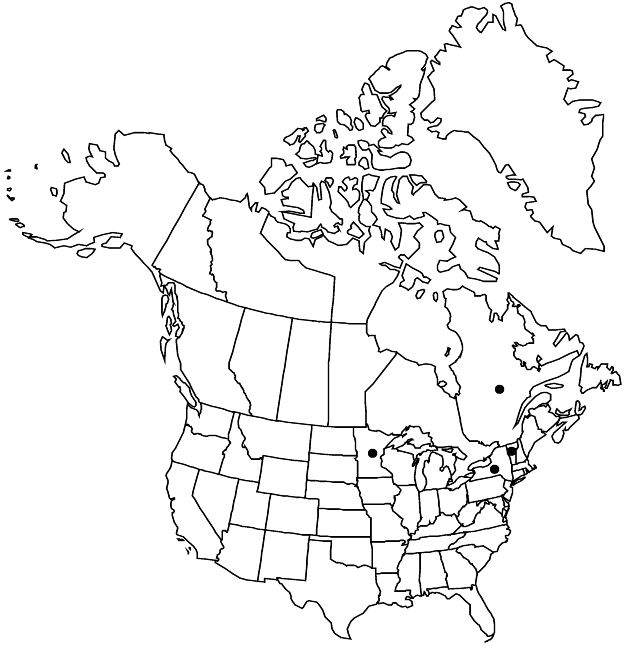Crataegus chrysocarpa var. blanchardii
J. Bot. Res. Inst. Texas 1: 1009. 2007.
Shrubs, 20–30 dm. Leaves: blade ovate to rhombic-ovate, base ± cuneate, sinuses: max LII 15–20%, lobe apex acute, veins 3–5 per side, abaxial surface glabrous or veins hairy, adaxial appressed-scabrous, glabrescent. Inflorescences: branches pubescent. Flowers 15–20 mm diam.; hypanthium pubescent; stamens 20, anthers pink. Pomes red, suborbicular, 8–10 mm diam., glabrous.
Phenology: Flowering May; fruiting Sep–Oct.
Habitat: Open brush
Elevation: 10–200 m
Distribution

Que., Minn., N.Y., Vt.
Discussion
Variety blanchardii is usually like var. chrysocarpa, but with 20 pink anthers; it ranges from Minnesota and Quebec to Vermont and New York. Eggleston perhaps combined it under Crataegus irrasa because of its leaves being (in specimens seen by him) more like C. irrasa in shape and size than those of C. chrysocarpa. The type material, however, is like C. chrysocarpa in these features.
Selected References
None.